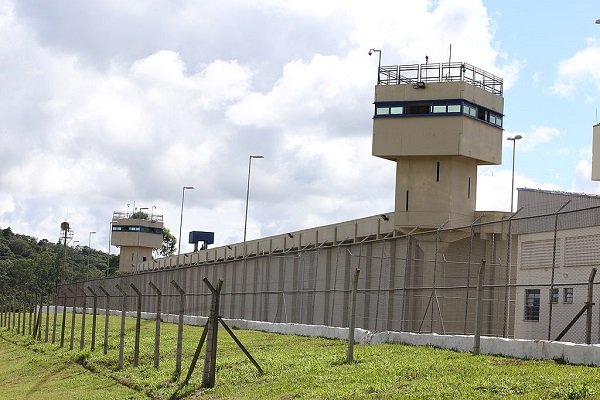With more than 750.000 inmates, Brazil holds the third-largest number of inmates in the world (World Prison, 2020), and has over 1,400 jail and prison units. According to figures of the Departamento Penitenciário Nacional (2019), São Paulo concentrates about 1/3 of all prison vacancies in Brazil (147,942), followed by Minas Gerais (41,573), and Rio de Janeiro (31,485).
This Content Is Only For Subscribers
To unlock this content, subscribe to INTERLIRA Reports.
While the world imprisonment rate lies at 145 detainees per 100,000 inhabitants, Brazil displays an incarceration rate of 356 per 100,000 inhabitants, ranking among the top 20 largest in the world (World Prison, 2020).
A large number of detainees is a relatively recent phenomenon in Brazilian history. Thirty years ago, the country’s imprisonment rate was 61/100,000, implying that in three decades the rate has increased six-fold. During the 2000s, the average annual prison population growth was 7.5%, while the Brazilian population expanded at 1.5% per year.
The Brazilian penitentiary system is complex and decentralized, being marked by major discrepancies in terms of infrastructure. In general, prison units suffer from overcrowding, the growing presence of criminal organizations, recurring rebellions, and several human rights violations.
PUNISHING CRIMINALS AND AVOIDING RECIDIVISM
The analysis of any giving justice and penitentiary system must start with their social functions: punish criminals and rehabilitate them for life in society. While the first objective has a sense of justice and set consequences for criminal practices to inhibit them, the second objective is that the punishment will correct the criminal and turn him into a rehabilitated law-abiding citizen ready to be back into society.
Due to overcrowding, hardened criminals from gangs and first-time criminals are intermingled and the Brazilian penitentiary system is seen as the major school of crime, as it “generates serious criminal activity, acts as an institution of discriminatory social control and discipline, and is unable to fulfil its allotted task of crime reduction or offender rehabilitation” (F. Macaulay, a researcher from The Centre for Brazilian Studies at Oxford University).
A recent announced tragedy illustrates this negative outcome: on July 25th, an 18-year-old robber was shot dead on Ipanema beach, in Rio de Janeiro. Between July 2019 and June 2020, the still underaged criminal had been detained seven times in six different police stations for thefts and robberies. But little was done to punish or rehabilitate him inadequate institutions, allowing him to continue with criminal practices that culminated with his death.
RESPECT OF HUMAN RIGHTS
In addition to the congestion of the prisons, the inhumane treatment of prisoners in some prisons undermines one of the main missions of the penitentiary system.
The homicide rate in state prisons is several times the national average. Regarding health conditions, detainees are 30 times more likely to contract tuberculosis and almost 138 times more likely to be infected with H.I.V. than the average Brazilian.
As regards the COVID-19, numerous studies are in progress, and will be treated in a future note.
Torture and sexual violence are also common. On July 2nd, Rio de Janeiro’s Justice Department ordered the suspension of five agents and the director of a female juvenile detention center in Ilha do Governador, for suspected sexual abuse of adolescent inmates, one of which was 13 years old and two others who became pregnant in the unit. The detention center is commanded by the General Department for Socio-Educational Actions (Degase), an agency linked to the state’s Education Secretariat, responsible for the execution of social and educational measures applied to young offenders. Following the discovery of the abuses, Rio de Janeiro’s Public Ministry (MPRJ) ordered the creation of a task force to investigate irregularities and mistreatment of inmates in all detention units of Degase.
REDUCING PRISON OVERCROWDING
The most common measure used by the Judiciary in order to empty the prisons has been the adoption of electronic anklets for semi-open and open regime prisoners. Under some conditions, the law allows inmates to stay at home arrest, as long as they are electronically monitored. The equipment is also used for temporary exits on special dates, such as Christmas and Mother’s Day. However, the evasion rate for electronically monitored prisoners or not, in semi-open regimes or open regimes, is considered high by the Public Ministry, especially in temporary exits.
The RJ Public Defender’s Office revealed another issue impacting prisons’ crowdedness: the slow pace of justice. Legally, the maximum preventive prison time allowed without revision is 90 days. However, in practice, 84,5% of temporary prisoners wait more than 90 days before being trialed. Actually, the average time of preventive prison in Rio de Janeiro State is eight months,
The issue of overcrowding can be solved by the construction of new units allowing to separate hardened and new criminals or by changing the sentencing policy of the Judiciary by removing the non-violent people from jail.




